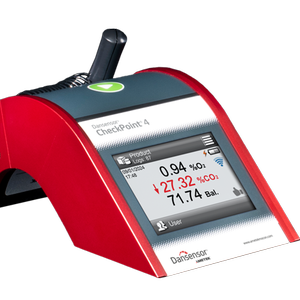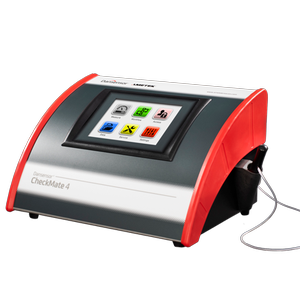Coffee
From roasting through to final product packaging, coffee production requires strict quality control and package testing which brings many challenges.
Water activity (a measure of “free water”) measurements determine the shelf-stability of coffee in relation to flavours. The flavour changes are related to the escape and/or chemical change in compounds inside the bean and flavours preserved (or not) by the drying process after harvest.
“Green coffee deteriorates very gradually after harvest. This is partially associated with the hydrolysis of sucrose into glucose. Water activity provides an indication of the level of this activity.” (Meter Aqualab USA). A water activity of 0.6 is generally acceptable for shelf stability of more than 6 months after harvest under normal storage conditions (moderate temperatures, low relative humidity).
Moisture measurement is utilised as a processing aid in determining when to stop drying / roasting green coffee or roasted coffee. An unprocessed, ripe coffee bean should contain around 45–55% moisture after picking. Processing and drying will then take its moisture content down to 10–12%.
Mätt Solutions supplies the Meter Food range of water activity instruments including the Aqualab 4TE and Aqualab 3 (AQ3) and for fast moisture content measurement supply the Wile Coffee
Roasted coffee beans release gas/outgas, this needs to be monitored to ensure packages don’t expand during transportation or on the shelf. When making single serve pods it is important to ensure the gas has been completely released and there is no oxygen in the pod. Coffee beans/grounds in packages must allow for out-gassing without allowing oxygen into the package as it negatively affects the taste of coffee.
Mätt Solutions provides a complete line of package testing and monitoring solutions for coffee processing.
- Off-line headspace gas analysers such as the Checkpoint 3 are used to ensure packaged coffee has minimal oxygen and to ensure nitrogen-flushed beans or single-serve pods are at the right gas composition level.
- On-line Gas Analysers such as the MapCheck 3 are utilised for monitoring the CO2 release/degassing to know when coffee is ready for packing.
- Leak Detectors/package integrity testers, valve testers and headspace gas analysers are used simultaneously, on a single sample, to measure the quality of the package, valve and headspace gas, respectively.
- Permeation package testing instruments designed for testing CO2 release valves and single-serve coffee pod testing
In general, a roasted coffee will have an aW of between 0.33 and 0.67. Green beans will normally be around 0.7 or 0.8 aW prior to roasting.
Aqualab have a very good, and highly detailed webinar that explores the relationship between water activity, moisture content, quality and volatility in coffee as the relationship is not always straightforward and linear.
Yes, although the relationship is not linear or simple. In general, a higher water activity is associated with faster reactions/staling.
Yes, water activity can be directly correlated to moisture content. If an Aqualab AQ3 is being used, a 60 second reading can determine both water activity and moisture content in both green beans and roasted coffee.
As there is a relationship between moisture content, water activity and flavour there is no one “best” water activity for green coffee beans. In general, however, a water activity of below 0.68 aW is “good” target to slow down/prevent the formation of green mould and maintain flavour.
The majority of medium quality roasted coffee blends will have a water activity of below 0.45, however the range can be between 0.33 and 0.67.
Packaging
-

CheckPoint 3 - Portable Gas Analyser
Portable gas analyser with long lasting sensor compared to previous models.
-

High-capacity gas mixer - MAP Mix Provectus
Gas mixer for both flow and buffer tank application
-

CheckMate 3 - Benchtop Gas Analyser
Accurate Benchtop Oxygen (O2) / Carbon Dioxide (CO2) gas analyser
-

High-capacity gas mixer - MAP Mix Provectus
Gas mixer capable for mixing Argon gas for the metal industry.
-

LeakMatic II - Packaging Leak Tester
Fully automatic non-destructive in-line leak detector
-

CheckPoint 4 – Superior Portable Headspace Analyzer
Portable gas analyzer for quality control of modified atmosphere packages (MAP).
-

CheckMate 4 - Headspace Gas Analyzer
ACCURATE, FAST AND RELIABLE HEADSPACE GAS TESTING
Temperature
Applicable Instruments
-

High-capacity gas mixer - MAP Mix Provectus
Gas mixer for both flow and buffer tank application
-

Continuous gas analyzer - MAP Check 3
The continuous gas analyzer is designed to precisely monitor gas content on packaging machines.
-

High-capacity gas mixer - MAP Mix Provectus
Gas mixer capable for mixing Argon gas for the metal industry.
-

Low-capacity gas mixer - MAP Mix 9001
Proportional gas mixing of carbon dioxide, oxygen and the inert gases nitrogen and argon used either in a 2-gas or 3-gas combination.
-

Industrial Process Analyzers - ISM-3
Measures oxygen in inert gases and CO2
-

Continuous Gas Analyzer - MAP Check 3 Pressure
Fully equipped inline gas analysis for pressurized systems
-

MAP leak detection - LeakPointer 3
Efficient non-destructive leak detection in Modified Atmosphere Packaging.
-

Lippke Leak System
Leakage and seal strength testing system for practically all types of flexible, semi rigid and rigid packages
-

Pack-Vac Leak Detector
Water bath vacuum leak detector.
-

DFP450W Handheld Thermometer
Easy to carry, water proof thermometer
-

Eutech PC 700 Multi-Paramter Bench Instrument
Measures pH, ORP, Conductivity and Temperature all in one unit.
-

PCSTestr 35 Mutliparamter Tester
pocket size tester measures that five parameters (measures pH, Conductivity, TDS, Salinity and Temperature)
-

Crossover 1540
Powerful industrial mixer.
-

Compact Overhead Stirrers
Lightweight Stirrer
-

Pawkit Water Activity Meter
Pocket-size and portable water activity instrument.
-

Water activity meter - Aqualab Series 4TE
Fastest most accurate water activity meter
-

Aqualab Vapour Sorption Analyser
Allows you to measure both DVS and DDI isotherms on your product
-

Water activity meter - Aqualab Series 4TE Duo
Can measure water activity and get moisture content simultaneously from a single sample
-

Water Activity Meter - Aqualab TDL
Test volatile samples. Super Accurate
-

EVA MS-R
Temperature control system for measuring system as anchors type
-

RM 100 I TOUCH
perfectly suited for so-called immersion use, installing it over a tank or on a support for a measurement in a pot





